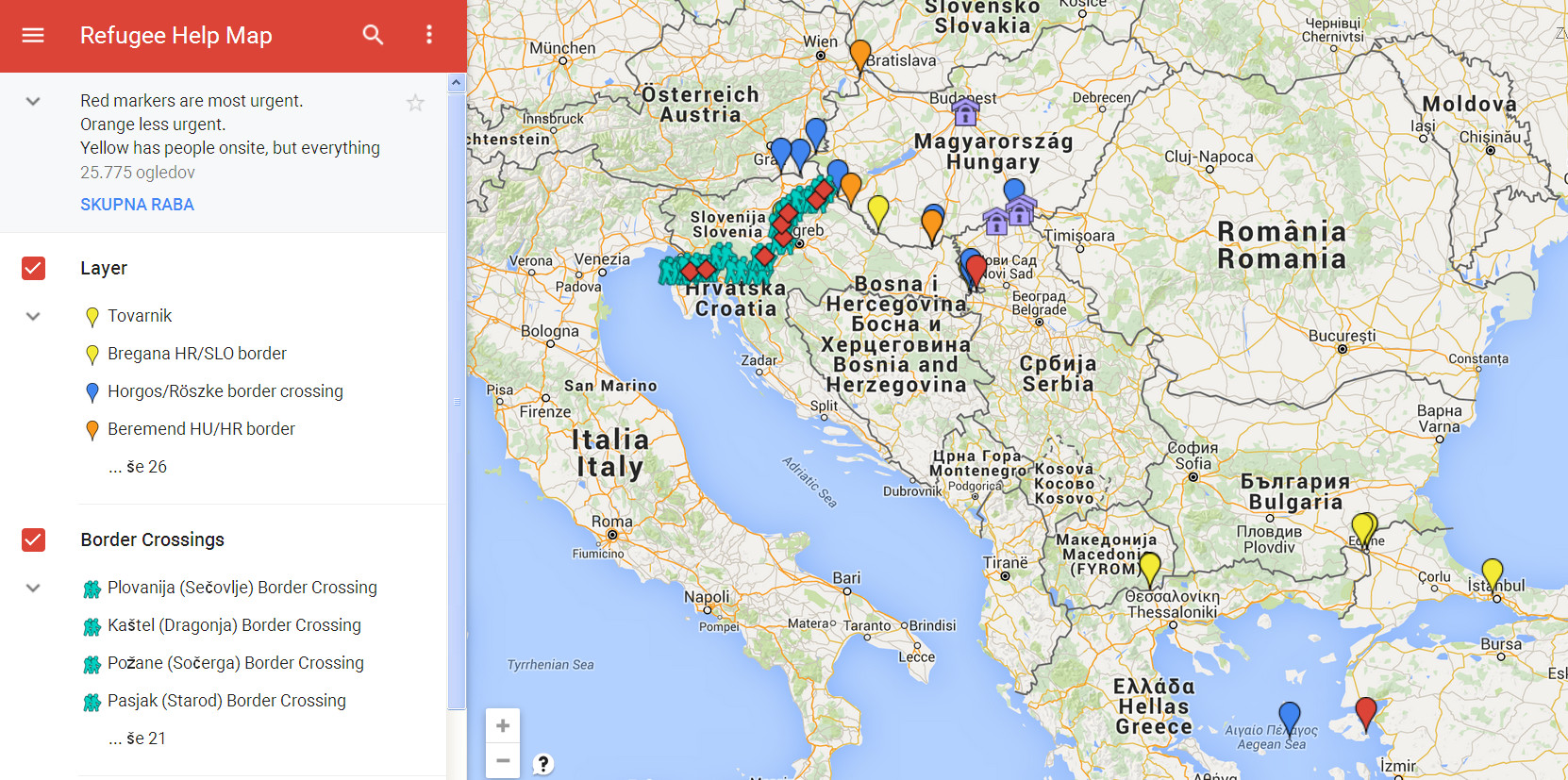India-Sri Lanka Relations
Over the past two decades, India has experienced a phenomenal rise in international politics related to its economic growth, its improved relations with the United States paired with its engagement in forums like BRICS, and its growing international recognition as a responsible actor and an emerging power. In its own regional backyard, however, India has been far less successful. Apart from its ongoing tensions with Pakistan, its problems in dealing with smaller neighbouring states like Nepal, Bangladesh and Sri Lanka are almost a textbook example of the difficulties of converting material power capabilities into actual influence.[1]
The case that best illuminates this dilemma is that of India-Sri Lanka relations. The geographical proximity to the island state, and especially the cultural proximity between Indian and Sri Lankan Tamils, has traditionally made India the most influential external power in Sri Lankan politics. However, the numerous inconsistencies in India’s approach have seriously undermined its influence on Sri Lanka. Those inconsistencies began in the 1980s, when India supported Tamil rebel groups from Sri Lanka to put pressure on the Sri Lankan government, later imposed a settlement in the civil war between the government and the Liberation Tigers of Tamil Eelam (LTTE), and ultimately got entangled itself in the armed conflict with its peacekeeping troops. The dismal failure of its peacekeeping mission and the assassination of former Prime Minister Rajiv Gandhi in an LTTE suicide attack induced India to adopt a hands-off policy towards the war-torn island state in the 1990s and 2000s. After a period of relative calm that followed a mediated ceasefire in 2003, the armed conflict in Sri Lanka escalated again in 2006.[2] The government of President Mahinda Rajapaksa started a massive military offensive that ultimately led to the defeat and total elimination of the LTTE in May 2009. The final phase of the war was marked by massive human rights violations and war crimes, with government forces firing on so-called ‘no-fire zones’ in which thousands of Tamil civilians had sought shelter.[3] During this final phase of the war, particularly from 2007 onwards, the Indian government tacitly supported Rajapaksa’s military effort (albeit without supplying offensive weapons or intervening directly),[4] and reportedly even ‘played a key role in warding off international pressure on Sri Lanka’.[5] This support for the government was an attempt on the part of New Delhi to not lose its leverage in Sri Lanka against the backdrop of China’s growing influence. At the same time, India put ‘modest pressure on the Sri Lankan government to minimise the humanitarian cost of their offensive’.[6] After the end of the war, New Delhi went so far as to support the Sri Lankan government in a special session at the United Nations Human Rights Council (UNHRC) on 28 May 2009, voting against a motion that called for an investigation of war crimes. Since 2009, the Indian government has tried to further improve relations with Colombo through the provision of financial assistance for infrastructure projects and humanitarian assistance for the displaced population.
Shifts in India’s Approach
At the same time, domestic pressure from the state of Tamil Nadu has forced the Indian government to join international calls for an investigation of human rights violations and war crimes. In a significant departure from its previous approach, in March 2012 and March 2013, New Delhi voted in favour of U.S.-sponsored UNHRC resolutions that asked the Sri Lankan government to fulfil its commitments and take actions to ensure justice, accountability and reconciliation (2012) and to carry out an independent investigation into alleged human rights law and humanitarian law violations (2013), respectively. This was a substantial shift in New Delhi’s approach, which had always been opposed to country-specific resolutions and to interference with the internal affairs of third countries.
New Delhi also put substantial pressure on the Sri Lankan government to induce it to hold provincial council elections in the north of the island in a first and long-delayed step towards the devolution of power and the implementation of the 13th Amendment to the Sri Lankan Constitution, which provides for the establishment of a system of provincial councils.[7] The elections were ultimately held on 21 September 2013, leading to an overwhelming victory for the Tamil National Alliance. It still remains to be seen, however, to what extent the increasingly authoritarian[8] and staunchly centralistic Sri Lankan government will be willing to allow the provincial government to exercise its powers.
The CHOGM
The most recent development in India-Sri Lanka relations concerned the 23rd Commonwealth Heads of Government Meeting (CHOGM), which was held in Colombo in November 2013. The Sri Lankan government had hoped to use this event to regain international visibility and legitimacy after the UNHRC votes and the repeated debates on its human rights record. However, in the lead up of the summit, the Canadian and the Mauritian prime ministers announced they would boycott the CHOGM due to the Sri Lankan government’s human rights violations. After huge domestic debates, Indian Prime Minister Manmohan Singh ultimately decided not to participate in the CHOGM, downgrading representation to External Affairs Minister Salman Khurshid. However, the fact that Singh refused to call his absence a boycott indicates the uneasiness of the central government with this outcome.
The heated political debate that preceded Manmohan Singh’s decision illustrates very well some of the dynamics of foreign-policy making in India and their implications for regional affairs. The two main political parties from the state of Tamil Nadu, the Dravida Munnetra Kazhagam (DMK) and the All India Anna Dravida Munnetra Kazhagam (AIADMK), which have been alternating in power at the state government and have served as important coalition partners at the centre over the past decades, have played a major role in shaping India’s recent Sri Lanka policy. Their limited impact on the central government in 2009, during the military offensive that cost the lives of so many Sri Lankan Tamils, reveals the extent of their opportunism and the coalition compulsions they are subjected to themselves at the state level. In recent years, however, Tamil parties’ pressures on the central government – and their actual room to manoeuvre – have grown. India’s UNHRC votes in 2012 and 2013 can be traced back to the massive protests that took place in Tamil Nadu and to the DMK’s (ultimately substantiated) threat of withdrawal from the UPA coalition.
Ahead of the CHOGM, both main Tamil parties called for Manmohan Singh to boycott the summit[9] and large protests were staged in the south Indian state.[10] Several ministers in Singh’s cabinet who hail from Tamil Nadu – among them Finance Minister P. Chidambaram – were opposed to the prime minister’s participation in the CHOGM.[11] A broad coalition of actors from Tamil Nadu therefore forced the weakened Manmohan Singh to boycott the meeting. On the contrary, the central government itself, and especially the foreign policy establishment, would have preferred the prime minister to participate. The need to keep some leverage on the Rajapaksa regime and to not alienate Sri Lanka and ‘lose’ it to the Chinese were among the main arguments in this debate. Moreover, some argued that only by cultivating the relationship with the Sri Lankan government would India be able to induce it to proceed with the devolution of powers to the Tamil minority.
Conclusion
On normative grounds, India’s attitude since the 2012 UNHRC vote is certainly to be welcomed. The problem is that this shift towards a support for international initiatives that seek to enforce human rights law and humanitarian law has mainly been driven by political calculations at the state-centre nexus. The principles of non-intervention and sovereignty continue to play a major role in India’s foreign policy approach – also due to concerns about external interference with India’s own human rights violations in Kashmir and the Northeast. The main driving force in India’s shift has therefore not been a change in normative attitudes but the growing role of regional parties in decision-making. This is part of a broader trend in India’s foreign policy making that has had its main repercussions on New Delhi’s policies vis-à-vis neighbouring South Asian countries. In 2011, for example, the chief minister of West Bengal undermined a potentially ground-breaking agreement with Bangladesh and, thereby, the opportunity of achieving better relations with one of India’s most difficult neighbours. This has further limited India’s ability to reach its goals in its troublesome neighbourhood – its huge power capabilities notwithstanding.
As for the Sri Lankan case, Manmohan Singh’s absence at the CHOGM has certainly had a negative impact on bilateral relations and on India’s ability to influence the devolution of powers for Sri Lankan Tamils. And, of course, it would have been wiser for Manmohan Singh to travel to Sri Lanka and send a strong signal by visiting Jaffna, as the British prime minister did. However, the negative implications of the CHOGM episode should not be exaggerated and New Delhi should pay attention not to give in to the balancing threats voiced by the Rajapaksa regime.[12] Shortly after the CHOGM episode, bilateral naval talks were held between the two countries, revealing that India remains an essential partner for Colombo.[13] As for the Chinese influence on Sri Lanka, India’s (limited) support for Rajapaksa’s war efforts was certainly not sufficient to keep the Chinese out of the island – and support for Sri Lanka in the UNHRC or Manmohan Singh’s participation in the CHOGM would certainly not have induced the Sri Lankan government to expel the Chinese from their huge port project at Hambantota. New Delhi should also pay attention not to associate itself too closely to the Rajapaksa regime – not just because of its increasingly authoritarian character, but also, quite pragmatically, because of the reported ‘growing restiveness among Sinhalese at government abuses, corruption and economic mismanagement’ by the Rajapaksa government.[14]
What India needs in order to keep its leverage on Sri Lanka and to increase its influence in its South Asian backyard is a coherent and credible policy of regional leadership. This would imply developing a ‘vision’ for the region, making disproportionate concessions to smaller states for the achievement of common goals, and taking a clear and consistent normative stand on issues like human rights violations and war crimes. It would also imply a better coordination between the centre and the states to develop a consistent foreign policy line. All this will hardly be possible ahead of the 2014 general elections. In the case of a BJP victory, one can only hope that Narendra Modi’s plans about a future broader role of states in foreign policy making were just one of his one-off remarks – or that some serious work on the coordination between centre and states in foreign policy would be done. And if a coalition of regional parties emerges as the winner of the 2014 elections, one has to hope for checks and balances dictated by coalition dynamics.





